Discover 11 hidden attractions, cool sights, and unusual things to do in Arches National Park (United States). Don't miss out on these must-see attractions: Fiery Furnace, Delicate Arch, and Double Arch. Also, be sure to include Balanced Rock in your itinerary.
Below, you can find the list of the most amazing places you should visit in Arches National Park (Utah).
Table of Contents
Fiery Furnace

Natural feature in Grand County, Utah. The Fiery Furnace is a collection of narrow sandstone canyons, fins and natural arches located near the center of Arches National Park in Utah, United States. The area is a popular hiking destination that was named for the reddish hue it exhibits in sunset light.
The Fiery Furnace contains a variety of plant species, including one of the largest known concentrations of Canyonlands biscuitroot. Fragile ecological features such as biological soil crust and ephemeral pools are also found within the Fiery Furnace, and are vulnerable to visitor impact. Arches National Park has more than 2,000 cataloged sandstone arches, with some being located in the Fiery Furnace, including Walk Through Arch, Crawl Through Arch, Skull Arch, Kissing Turtles Arch, and Surprise Arch.
Due to the environmental impacts of heavy visitation, the National Park Service initiated a permit system in 1994 to limit access to the Fiery Furnace. Visitors may purchase permits to hike in the Fiery Furnace alone or join a ranger-guided tour. Two trails lead hikers from the parking lot into the Fiery Furnace, but once inside, hikers must navigate the trailless labyrinth of rock formations. To minimize impact on the plant communities, visitors must walk along sandy washes or on sandstone surfaces. During the approximately 2 mi (3.2 km) ranger-guided tour, which lasts about three hours, visitors will encounter uneven terrain, drop-offs, and narrow passages. Rangers describe the history of the area, while noting the most prominent arches and other geologic features. Visitors can also choose to obtain a self-guided permit and hike through the Fiery Furnace on their own; however, they are required to watch an orientation video describing the area and how to minimize their impact.[1]
Delicate Arch
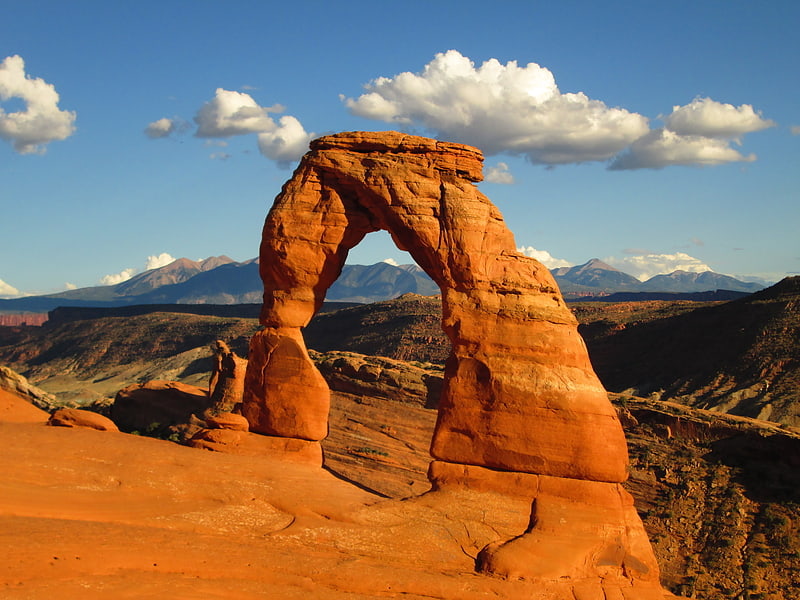
Famous sandstone arch in the high desert. Delicate Arch is a 52-foot-tall freestanding natural arch located in Arches National Park, near Moab in Grand County, Utah, United States. The arch is the most widely recognized landmark in Arches National Park and is depicted on Utah license plates and a postage stamp commemorating Utah's centennial anniversary of admission to the Union in 1996. The Olympic torch relay for the 2002 Winter Olympics passed through the arch.[2]
Address: Arches National Park, 84532 Moab
Double Arch
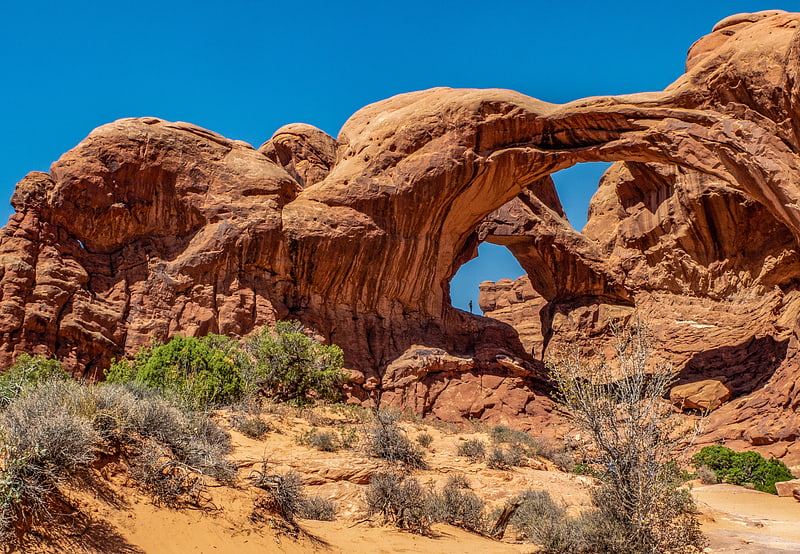
Formation noted for front and back spans. Double Arch is a close-set pair of natural arches in Arches National Park in southern Grand County, Utah, United States, that is one of the more known features of the park.[3]
Address: Arches Entrance Road, 84532 Arches National Park
Balanced Rock
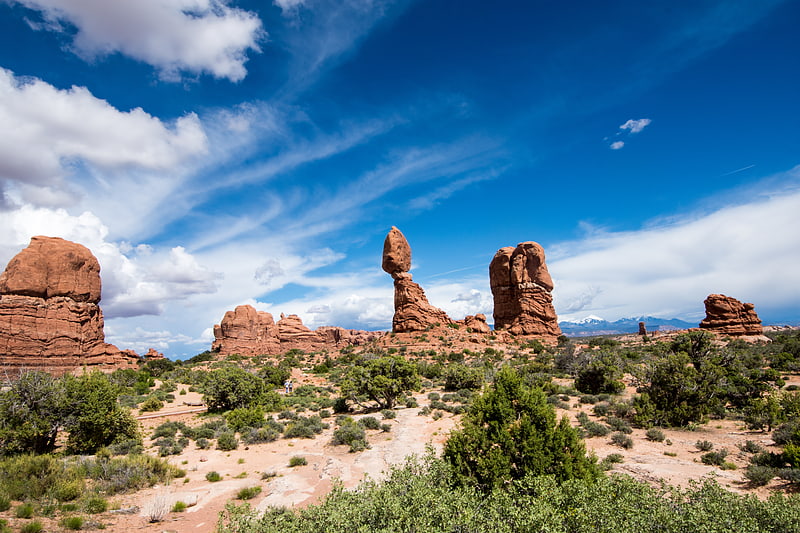
Massive rock resting on a narrow pillar. Balanced Rock is one of the most popular features of Arches National Park, situated in Grand County, Utah, United States. Balanced Rock is located next to the park's main road, at about 9.2 miles from the park entrance. It is one of only a few prominent features clearly visible from the road.
The total height of Balanced Rock is 128 feet (39 m), with the balancing rock rising 55 feet (16.75 m) above the base. This rock is the largest of its kind in the park, weighing approximately the same as an icebreaker ship or 27 blue whales. Balanced Rock had a smaller sibling named "Chip-Off-the-Old-Block" that collapsed in the winter of 1975–76, the eventual fate of this feature as well.
There is also a short loop trail leading around the base of the rock.[4]
Address: Arches Entrance Road, 84532 Moab
Landscape Arch
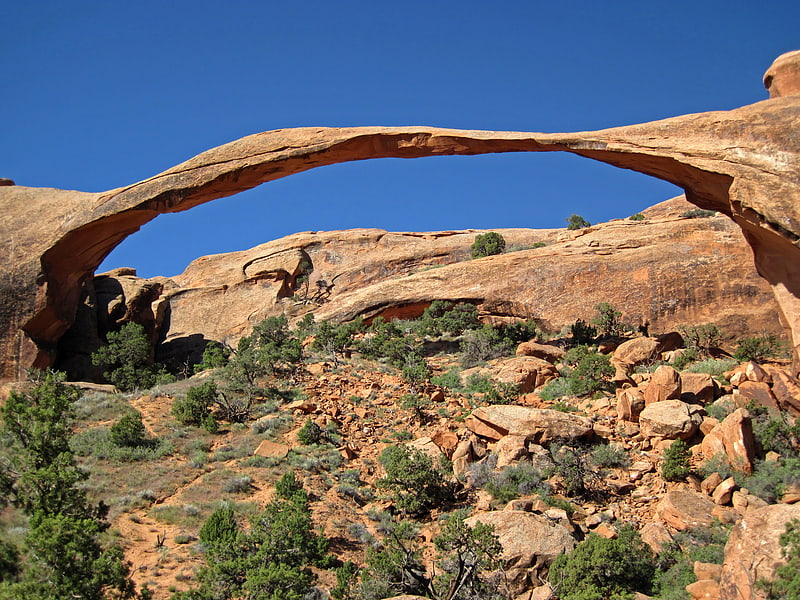
Arches National Park's longest rock arch. Landscape Arch is the longest of the many natural rock arches located in Arches National Park, Utah, United States and among the longest natural stone arches in the world.[5]
Devils Garden
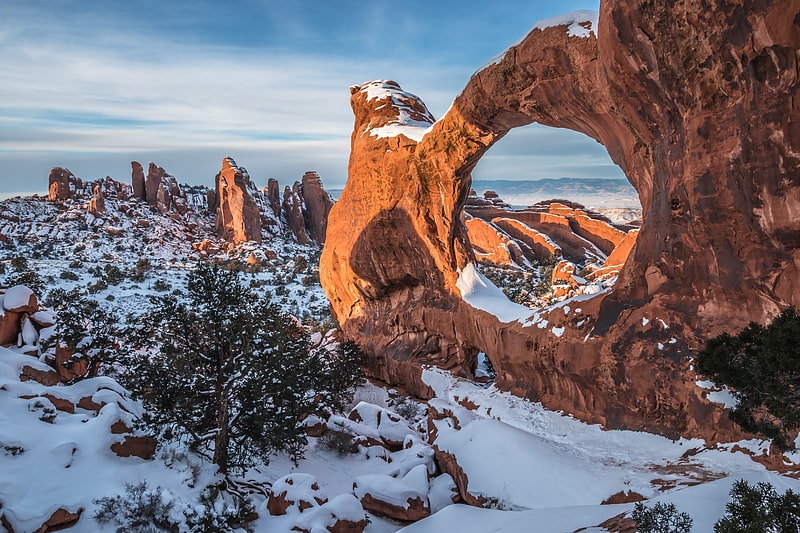
Picturesque area with unique rock arches. Devils Garden is an area of Arches National Park, located near Moab, Utah, United States, that features a series of rock fins and arches formed by erosion. The Devils Garden Trail, including more primitive sections and spurs, meanders through the area for 7.2 mi. The trailhead leads directly to Landscape Arch after a 0.8 mi outbound hike, while Tunnel Arch and Pine Tree Arch can be seen on spur trails on the way to Landscape Arch. Several other arches, including Partition, Navajo, Double O, and Private Arch, as well as the Dark Angel monolith and Fin Canyon, are accessed via the primitive loop trail and its spurs.
Wall Arch, before its collapse in 2008, was also located in Devils Garden just north of Landscape Arch. Black Arch is visible as a dark outline from the primitive trail and can be approached via an unmarked sidetrack.
The trailhead for Devils Garden is located at the end of the main park road. A campground and amphitheater are also available at the site.[6]
Wolfe Ranch
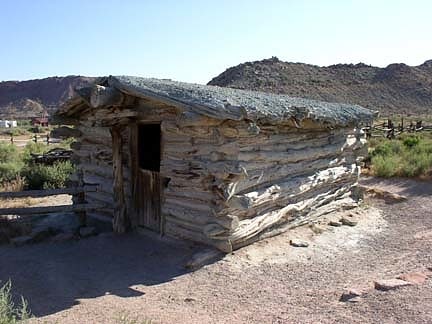
Historical place in Grand County, Utah. The Wolfe Ranch, also known as Turnbow Cabin, is located in Arches National Park near Moab, Utah, United States.
John Wesley Wolfe settled in the location in 1898 with his oldest son Fred. A nagging leg injury from the Civil War prompted Wolf to move west from Ohio, looking for a drier climate. He chose this tract of more than 100 acres (0.40 km2) along Salt Wash for its water and grassland - enough for a few cattle. The Wolfes built a one-room cabin, a corral, and a small dam across Salt Wash. For more than a decade they lived alone on the remote ranch. In 1906, Wolf's daughter Flora Stanley, her husband, and their children moved to the ranch. Shocked at the primitive conditions, Stanley convinced her father to build a new cabin with a wood floor.
The ranch on Salt Wash was established about that time under the Bar DX brand. With the arrival of Wolfe's daughter and son-in-law in 1906, the newer, surviving structures were built. However, the Stanley family moved to Moab in 1908. The family sold the ranch to Tommy Larson in 1910 and returned to Ohio. John Wolfe died on October 22, 1913, in Etna, Ohio at the age of eighty-four.
Larson eventually sold the ranch to Marvin Turnbow and his partners, Lester Walker and Stib Beeson. Turnbow helped with the first detailed geologic mapping of the area and partly because of this, early US Geological Survey maps show the name, "Turnbow Cabin." Wolfe's granddaughter, Ester Stanley Rison, visited the ranch in 1970 and provided information about the cabin's early history. As a result, the original name has been restored, and "Wolfe Ranch" appears on more recent maps.[7]
Rock House-Custodian's Residence
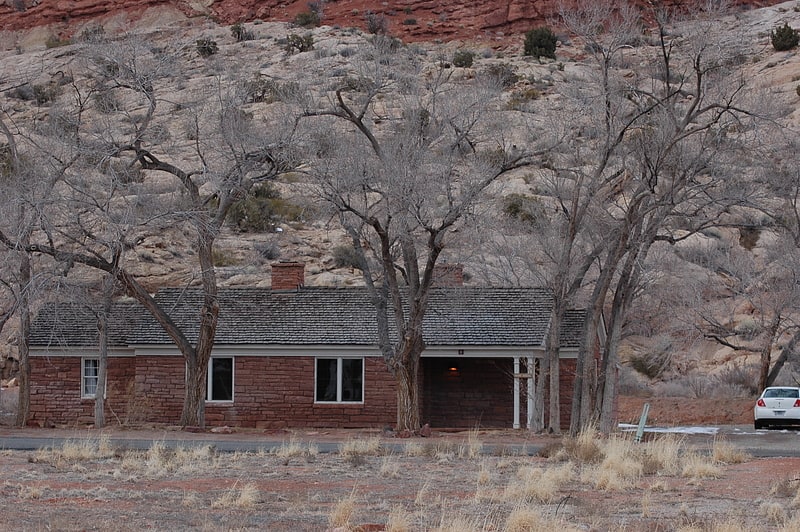
The Rock House was built as a residence for the National Park Service custodian of Arches National Monument, now Arches National Park, in 1941. Constructed using Civilian Conservation Corps labor, the residence served its purpose until it was replaced by newer housing under the Park Service's Mission 66 program. The house is built of local stone in a coursed rubble pattern, with painted milled wood trim. The house was designed by Verland Norgard, in a style that combines rustic elements with Greek Revival and Federal style details. Two small, non-contributing additions have been constructed to the rear of the house, and the interior, which has been extensively modified, does not retain its historic integrity.
The Rock House was placed on the National Register of Historic Places on October 6, 1988. It has been used as office space for the Canyonlands Natural History Association.[8]
Courthouse Wash Pictographs
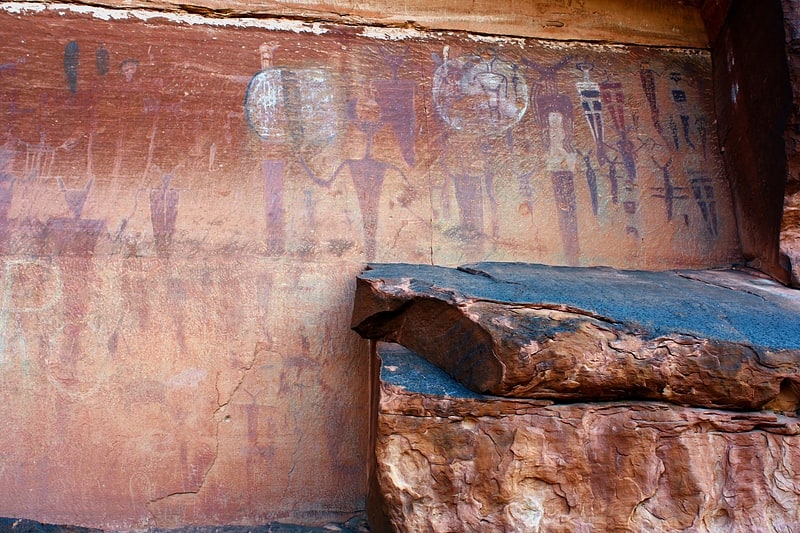
The Courthouse Wash Pictographs are a series of large pictographs created over a long period of time, located on a sheltered sandstone wall at the mouth of Courthouse Wash, Arches National Park in Grand County, Utah, United States, just north of Moab, that is listed on the National Register of Historic Places.[9]
Courthouse Towers
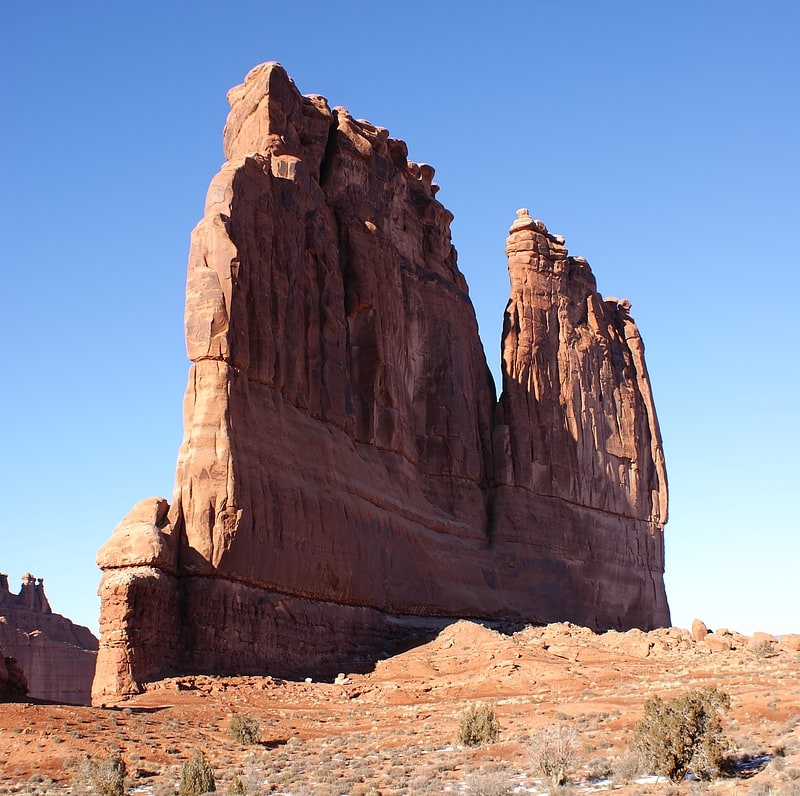
Natural feature in Grand County, Utah. The Courthouse Towers is a collection of tall stone columns located in Arches National Park.[10]
Petrified Dunes

Scenic spot in Grand County, Utah. The Petrified Dunes are a series of rock formations located in Arches National Park in southeastern Utah, United States. The dunes can be found just off of the park road between the Courthouse Towers and the Windows Area. The formation was produced when ancient sand dunes hardened into stone under the overlying subsequent material, which later eroded away.[11]